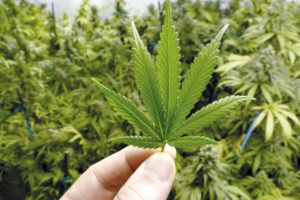 Growing your cannabis is an exciting and rewarding experience. Whether you have a skilled green thumb or are attempting to grow for the first time, similar elements apply from seed to flower.
Growing your cannabis is an exciting and rewarding experience. Whether you have a skilled green thumb or are attempting to grow for the first time, similar elements apply from seed to flower.
Certain considerations are crucial to the success, or failure, of the cannabis crop, and a little know-how goes a long way to ensure a productive harvest. Two (2) key elements that will directly affect growing quality cannabis – choosing the proper lighting and location.
Outdoor Lighting & Location
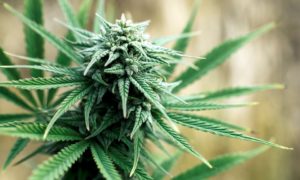 Sunlight is a tried and true method for growing any plant, cannabis included. The full-spectrum UV light from the sun provides all of the necessary wavelengths for your crop to grow and thrive. The naturally varying lengths of sunlight throughout the growing season encourage the natural growth cycle of the plant.
Sunlight is a tried and true method for growing any plant, cannabis included. The full-spectrum UV light from the sun provides all of the necessary wavelengths for your crop to grow and thrive. The naturally varying lengths of sunlight throughout the growing season encourage the natural growth cycle of the plant.
The growing amount of sunlight from the spring equinox to the summer solstice encourages vegetative growth with daily light amounts ranging from 12 – 18 hours/day for most climates suitable for cannabis cultivation. The decreasing amount of sunlight post-summer solstice triggers the biological response to blossom and bloom, creating harvestable flowers around the autumnal equinox.
When growing outdoors, choose a south-facing location in the northern hemisphere or a northern-facing location in the southern hemisphere. This will allow for the maximum amount of direct sunlight on a growing area and encourage the highest potential growth and yield.
Build a garden or greenhouse away from any tall structures (trees, buildings, etc.) that could block sunlight and impede the growth of plants. The more sunlight that is available to the crop, the more successful it will have to grow large and produce high yields.
Indoor Lighting and Location
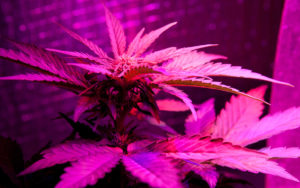
Indoor lighting presents different considerations for optimal growth, different lighting options are numerous and somewhat of personal preference. Types of grow lights to consider include:
- Light Emitting Diode (LED)
- High-Intensity Discharge (HID)
- Compact Fluorescent Lamp (CFL)
LED setups are energy efficient but with low power, often requiring large panels. HID is popular amongst professional grow-ops and very powerful requiring hoods, reflectors, and of varying wattage lamps to encourage optimal growth. CFL is cheap but exceptionally large.
Indoor lighting requirements vary based on the growing stage of the plant. Increasing light intensity over the growing cycle leads to optimal growth. The intensity of light reaching the plants or the Photosynthetic Photon Flux Density (or PPFD) should look similar to this:
- Propagation – 80 PPFD
- End of Growth Stage – 250 – 275 PPFD
- Vegetative State – 450 – 600 PPFD
- Flowering State – 500 – 1,000 PPFD
The location for an indoor grow site should be a clean, enclosed space with adequate ventilation. Ventilation is essential as grow lights can create a tremendous amount of heat leading to conditions that can hamper growth, encourage mold and even become a fire hazard.
Ventilation is also key in regulating air exchange which dictates the grower’s control over heat, humidity, and oxygen/CO2 content – factors critical to the success of cannabis growth indoors.
Growing Techniques: Soil-based and Hydroponics
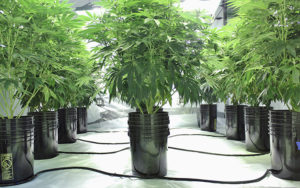 The usage of soil-based mediums to grow cannabis is the most traditional and newbie-friendly of available techniques. The soil is composed of three (3) elements:
The usage of soil-based mediums to grow cannabis is the most traditional and newbie-friendly of available techniques. The soil is composed of three (3) elements:
- Clay
- Sand
- Silt
Cannabis requires properly irrigated and slightly acidic soil. Each soil type has its pros and cons. Of the three soil components, silty soil is arguably the best due to its high moisture content and porous nature. Although the sand is very malleable, it doesn’t hold as much moisture in comparison to silt. Other binding agents such as peat moss or compost will be needed.
Hydroponic or soilless mediums are popular amongst indoor growers. This is primarily because hydroponically-grown cannabis can lead to larger, faster yields. Liquid mineral nutrients replace the role of soil and the aqueous nutrient solution is absorbed directly by the plant’s roots.
Because buffering organic media isn’t used, hydroponic growers must exercise more precision to ensure the root’s environment is appropriate.
Nutrients
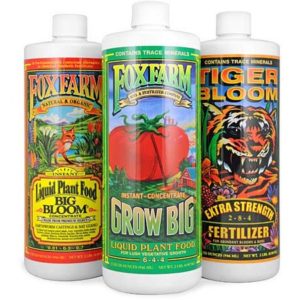 To better ensure a healthy and prolific harvest, your cannabis must be given the proper nutrients. Nutrients can be provided in several ways ranging from pre-fertilized soil mixes to specifically-crafted nutrient solutions.
To better ensure a healthy and prolific harvest, your cannabis must be given the proper nutrients. Nutrients can be provided in several ways ranging from pre-fertilized soil mixes to specifically-crafted nutrient solutions.
Nitrogen, Phosphorous, and Potassium (or NPK) are the three essential macronutrients that cannabis plants use during the growing process.
Do proceed with caution, however, as cannabis is rather sensitive and can be damaged if overfed. On a smaller scale, it is recommended that cannabis plants receive calcium, magnesium, iron, and copper.
pH
 Maintaining a healthy soil pH range is an essential part of the growing process. The pH of the soil determines which nutrients will be soluble, and thus, also controls the growth and health of the plant through metabolism and nutrient uptake.
Maintaining a healthy soil pH range is an essential part of the growing process. The pH of the soil determines which nutrients will be soluble, and thus, also controls the growth and health of the plant through metabolism and nutrient uptake.
Since cannabis requires a slightly acidic growing medium, a soil pH range of 5.8 to 6.5 is suggested, with an optimum water pH between 6.0 and 6.3. Hydroponic systems require a different range of pH levels, typically between 5.2 – 5.8.
Because hydroponic growing methods are often solution-based, pH levels above 6.5 can lead to the condensation of micro-nutrients from the solution mix.
It is perfectly normal to have pH levels drift during the growing process. Your growing method of choice will range on a variety of factors, such as whether you’ll plant indoors, outdoors, the hydroponic system, aquaponic, general level of cannabis industry training and experience, etc.
Monitoring Plant Health & Harvesting
 Throughout cannabis cultivation, carefully inspect plants to ensure optimal health and a magnifying glass or lens is critical. Watch for:
Throughout cannabis cultivation, carefully inspect plants to ensure optimal health and a magnifying glass or lens is critical. Watch for:
- Spider Mites – Microscopic arachnids that cause small spots on leaves and stunt growth.
- Fungi – Fungal outbreaks can cause roots to rot and leaves to wilt, turn yellow, or spot white. There are at least 88 types of fungi that can affect cannabis. Humidity can facilitate fungal growth and should be carefully controlled by indoor growers; tools are available to measure humidity.
- Disease – May be caused by fungal pathogens as with Pythium root rot, but also include viruses such as tobacco mosaic virus. Signs of the disease include poor growth, dead leaf tips, and mosaic patterning or spots on leaves.
To prevent these issues, maintain cleanliness and circulation. Be aware of erroneous conditions, such as excess or insufficient moisture, nutrient overload, and improper lighting. If plants sag, fail to grow, or demonstrate discoloration, there is a problem. Nip it in the bud.
Harvesting
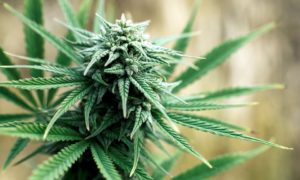 Flowering requires 12 hours of darkness and 12 hours of light. During this stage, female plants deliver flowers that bloom, swell, and produce resin.
Flowering requires 12 hours of darkness and 12 hours of light. During this stage, female plants deliver flowers that bloom, swell, and produce resin.
The ideal window to harvest flowers is roughly 5 to 7 days. At this point, trichomes crowd the leaves. The pistils will fall back and change color from white to shades of red and brown.
Determining the peak time to harvest can be more of an art than a science. Check the resin glands on the flowers: when ready, they will be fully formed (stalk with a gland head) and creamy white to transparent amber. Use your magnifying lens. Early on, glands are clear; they progress to late harvest as the color ambers.
Changes may not be uniform. Harvesting too early or too late may negatively affect the chemical profile of the final product. Most growers stop fertilization 7 to 10 days before harvesting to avoid affecting taste with residual chemicals. Furthermore, growers rinse/flush plants and soil with pure water to remove any chemicals used.
The use of a specialized flushing agent (rather than water) may permit fertilization up to three days before harvest. That said, there are a few dissenting voices that question the validity of the flushing practice. Sever the plant at the base. Your cannabis plant is now ready to be harvested.
Congratulations! But, you’re not quite done.
Trimming and Curing
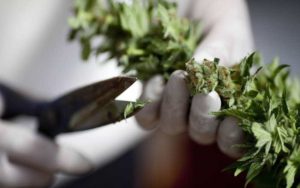 Trim off the leaves and leaf stems with a pair of trimming scissors. Hang the trimmed cannabis flowers in an area with moderate humidity and adequate ventilation at 65 – 75° F.
Trim off the leaves and leaf stems with a pair of trimming scissors. Hang the trimmed cannabis flowers in an area with moderate humidity and adequate ventilation at 65 – 75° F.
Some DIY’ers use a closet. Monitor for a week or more until dry (stems should snap, not bend). Continue to monitor for mites and other unwanted guests.
Cure the flowers for several days to several weeks in a sealed container. Lift the lid several times daily and sift the buds to release excess moisture and evade mold. The weight of a fully dried flower bud may be 75% less than its weight at harvest.
There you have it. Growing your cannabis is easy to start and difficult to master. Take these tips with you on the journey, and you’ll be surprised at how much fun you have.
Let us know what you think.




Responses